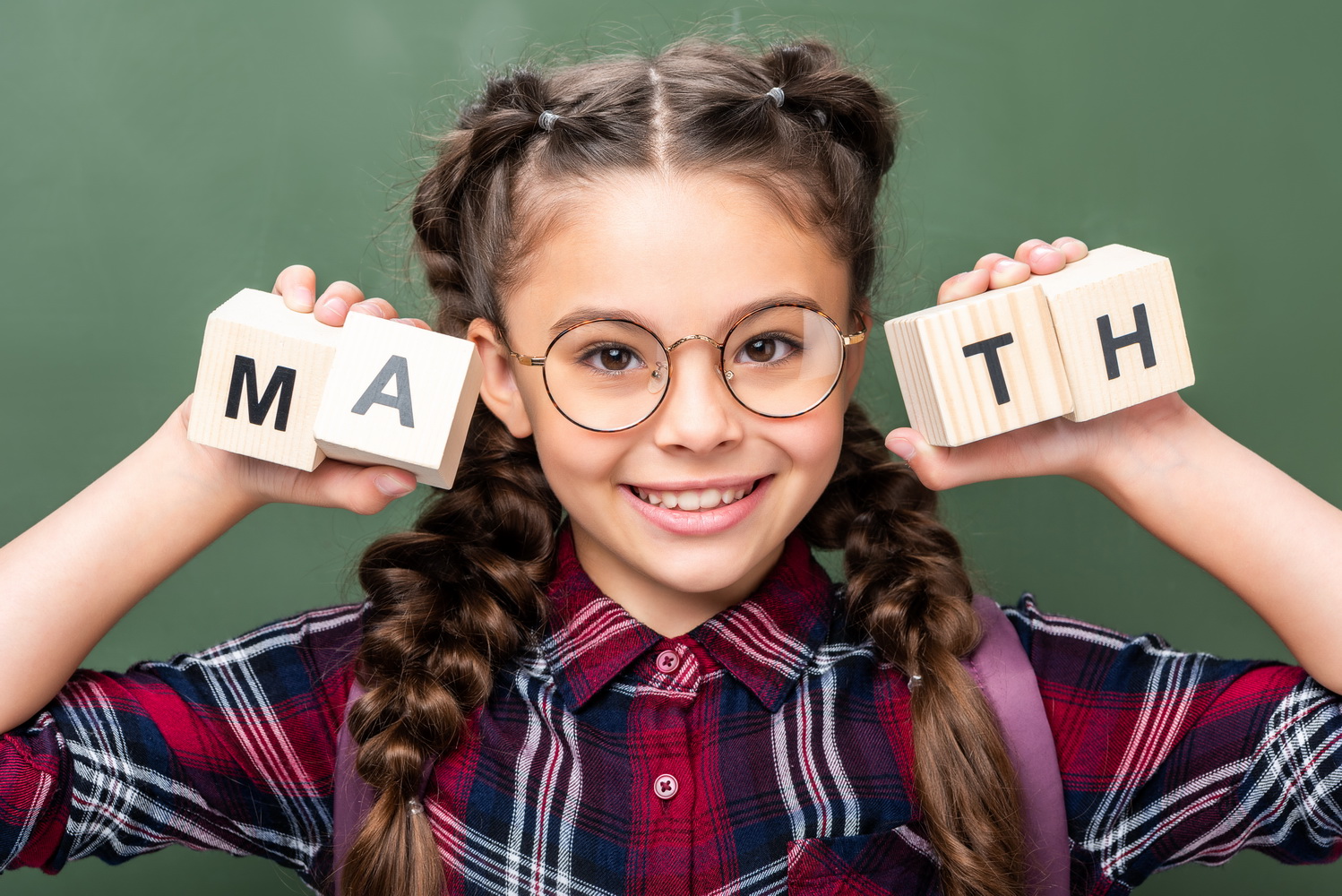Spatial awareness Normal Geometry Worksheets for Ages 4-6
6 filtered results
-
From - To
Unlock the world of spatial awareness with our engaging Normal Geometry Worksheets designed specifically for children aged 4-6. These worksheets offer interactive activities that help young learners develop essential skills in understanding shapes, sizes, and spatial relationships. Each worksheet is thoughtfully crafted to encourage critical thinking and creativity while making learning fun and accessible. Perfect for early education at home or in the classroom, these resources help build a strong foundation in geometry. Introduce your child to the fascinating world of shapes and enhance their cognitive abilities with our vibrant and stimulating spatial awareness worksheets. Start their learning journey today!
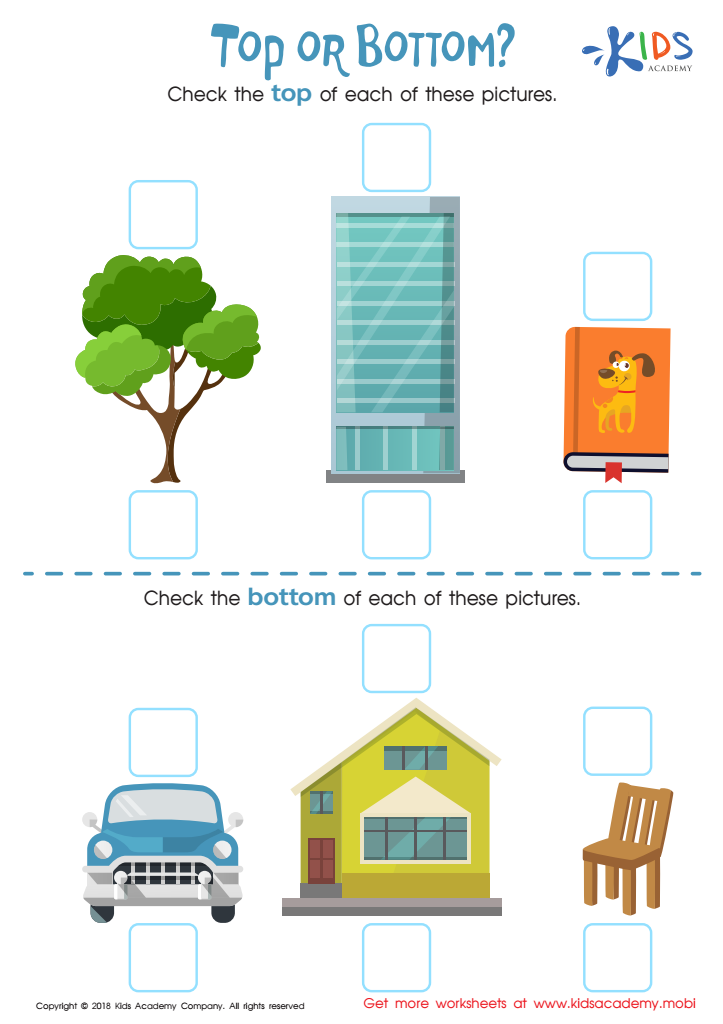

Top or Bottom Worksheet
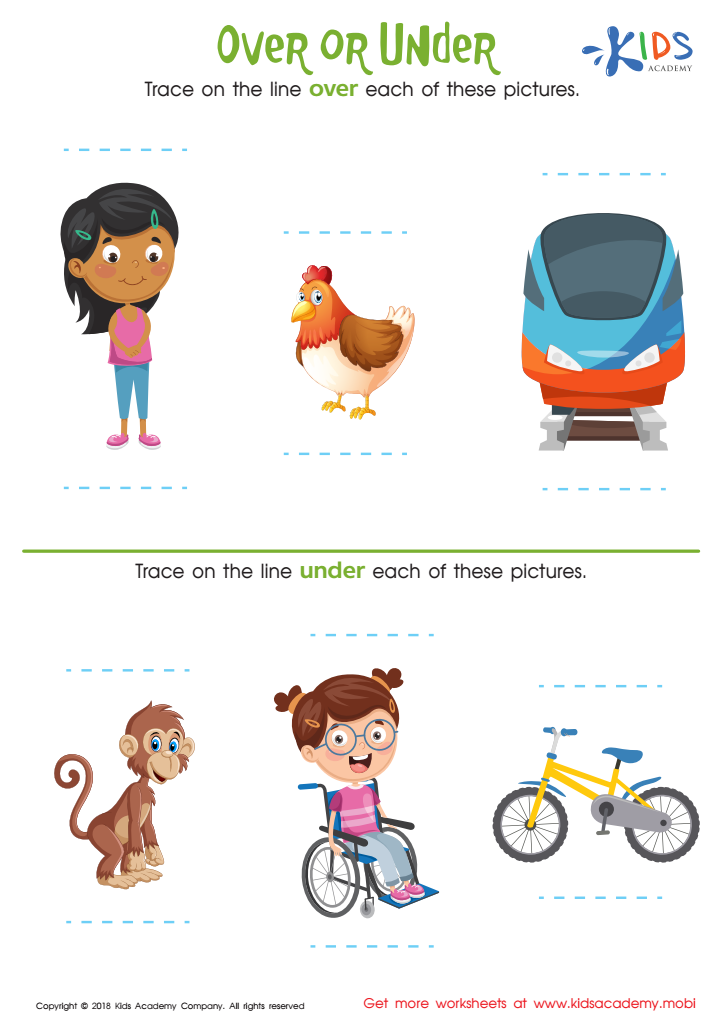

Over or Under Worksheet


Three–Dimensional Shapes: Cylinder Worksheet


In Front or Behind Worksheet
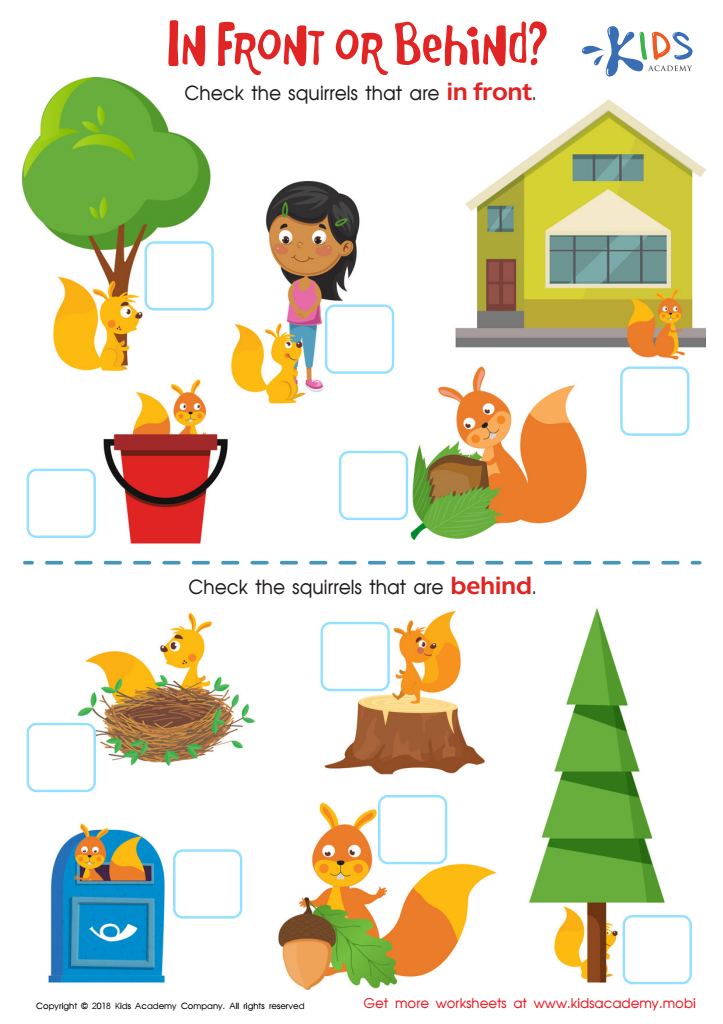

In Front or Behind: Part 2 Worksheet
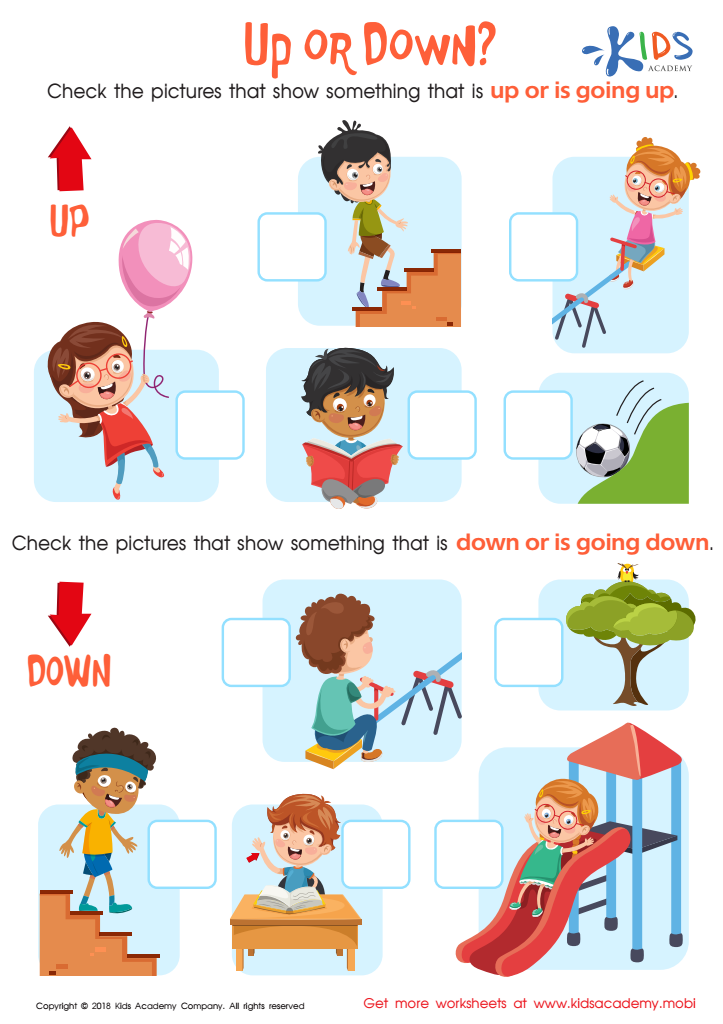

Up or Down Worksheet
Spatial awareness and foundational geometry are crucial for children aged 4-6 as these skills form the bedrock of their cognitive development and understanding of the world. At this early stage, children are naturally curious and eager to engage with their surroundings. Enhancing spatial awareness fosters critical thinking skills, as children learn to navigate their environment, recognize patterns, and make connections between objects. Through activities like building blocks, shape sorting, and puzzles, they gain an understanding of shape, size, distance, and position, which are essential for problem-solving.
Moreover, early experiences with geometric concepts contribute to the development of mathematical skills. Recognizing shapes and spatial relationships not only builds a foundation for geometry in higher grades but also enhances their reasoning skills, which are applicable across various subjects. Engaging parents and teachers in spatial awareness activities encourages collaboration, strengthens social skills, and reinforces learning.
Ultimately, cultivating spatial awareness through normal geometry allows young learners to develop a strong sense of confidence in their abilities, paving the way for their future academic success. Therefore, it is essential for educators and parents to prioritize these experiences to ensure well-rounded development and lifelong skills in their children.
 Assign to My Students
Assign to My Students















